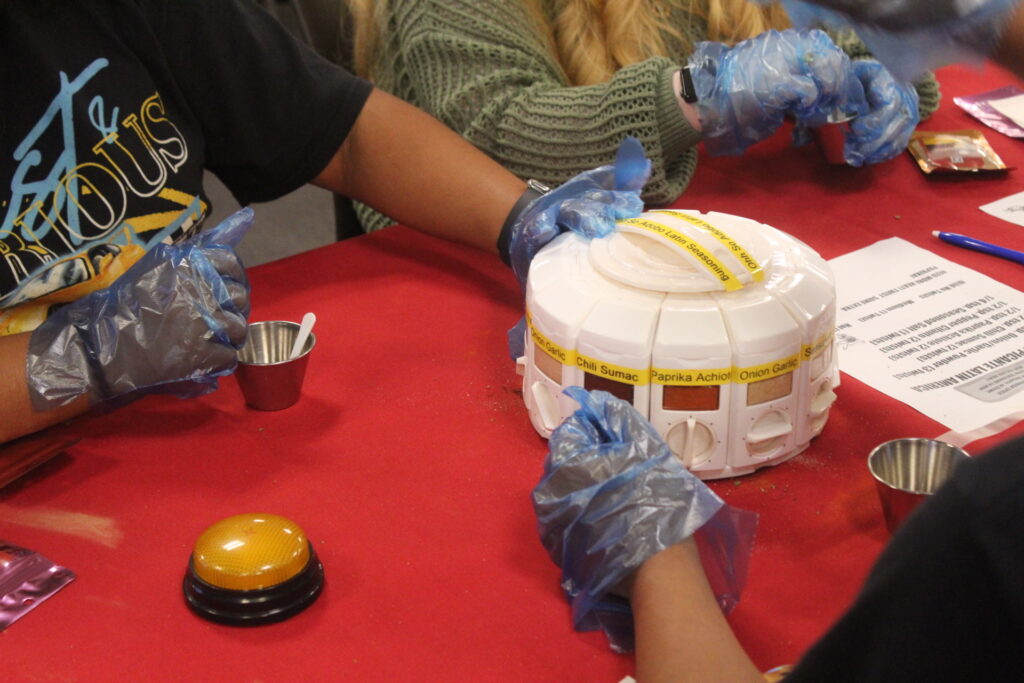Nevaeh Brown
On Sept. 29, West Commons continued Hispanic Heritage Month festivities by hosting Cantina Night by way of the Center of Student Involvement and Inclusion.
The entire purpose of the night was to celebrate the month through several Hispanic countries’ popular cuisines.
“It’s a night to celebrate all of the different kinds of foods from Latin countries as well as give participants activities to engage in and have something to take home with them,” said student assistant Dannya Pacheco.
Cantina Night was CSII’s last major event before the other Hispanic and Latin American Organizations were due to host their own.
During Cantina Night, the Latino Cultural Society had a table of art sets from watercolor painting on mini ceramic bowls to emulate the Mexican tradition of Talavera pottery clay bowl tiling or painting, to coloring sheets with quotes from activist Caesar Chavez to astronaut Ellen Ochoa.
Cantina Night represented Mexico with elote, which is grilled corn on the cob coated in a mayo cream sauce garnished with seasonings, white queso cheese, and lime juice.
Alongside the popular side dish, they served chicken flautas, which is a rolled taco with a tomatillo or Mexican husk tomato salsa. Then a Mexican dish called calabacitas, a traditional pork dish sautéed in some form of fat mixed together with chili and corn.
Cuba’s cuisine was represented with ropa vieja which is shredded beef garnished with grilled tri color peppers, onions and a plethora of spices. Cuban rice and black beans and Cuban sandwich sliders, which can be labeled as two favorites in this part of the world, especially the south.
“…We also have aguas frescas and horchata, which we usually drink after dinner,” said Pacheco as she rattles off notable details on the night’s various menus.
Since the night was all about food, a company called Spice It Up brought to the university via an entertainment agency held a spice-making demonstration.
Spice It Up is essentially a business created by one of the founders known to his audience as El Gringuito, Lee, his real name, was a Latin dance performer before the pandemic three years ago, hosting dance events with over 10,000 participants. Due to 2020’s unforeseen circumstances, he and his wife Kat pivoted their fondness for the Latin cultures of their choreography roots and brought them into homes via a talent agency that caters to universities nationwide with the sole purpose of traveling to colleges and educating college students.
One of his demonstrations was for a Latin American adobo picante seasoning where the spices provided were pepper, cilantro, chile, sumac, achiote and seasoned salt.
The other was a recipe for Mexican hot chocolate with dry milk, cacao powder, powdered Nesquik, ancho chili powder, ground coffee and for an added flare of spice, cayenne pepper powder was provided.
In the midst of the demonstrations he doles out trivia questions ranging from Hispanic Heritage, the origin of spices originated from Spanish civilizations to even the effect some spices have on animals, with prizes at the ready.
“A college is a great place to bring a show that’s fun but also educational, giving students a chance to learn,” said Lee.
